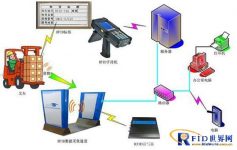
RFID channel intelligent identification material management plan
[ad_1]
1. Program overview
Fixed assets are one of the most important components of the assets of party and government agencies, the military, enterprises and institutions, and are an important guarantee for the normal management and operation of various units. Strengthening the management of fixed assets, exerting the greatest benefits of fixed assets, preventing the loss and idleness of fixed assets, has received extensive attention from various units. There are some problems in the current fixed asset management process: the fixed asset management financial management department and the physical management department The lack of business contacts and business communication between the books makes it impossible to reflect the existence of assets; many units have a large number of expensive assets, but do not have an integrated information system, lack valuable fixed asset management information, difficult to manage fixed assets, and low work efficiency In fixed asset management, asset cards and physical assets are inconsistent; it is difficult to effectively control the loss of fixed assets; asset inventory is time-consuming, laborious, limited in effect, and “clear before and after chaos”; operating costs are difficult to calculate in a timely and accurate manner.
2. Technical solution
2.1, system structure diagram
The design of this article is based onRFIDTechnical fixed asset management system, the design goal is to realize the automatic supervision and alarm of various management processes, improve the level of security, and facilitate the management staff to conduct statistics, query and grasp the real-time status and use of assets.

Figure 1 System structure diagram
Data collection layer: This layer is directly connected to each RFIDCard readerConnect to collect the data returned by the card reader. All data interactions with the card reader are filtered by this layer before being passed to the database layer, which can reduce the redundant data of the database and reduce the burden on the management application layer.
Database layer: SQL SERVER database system is adopted, which can accurately save large-capacity data in real time. Set up data security and backup mechanisms at the same time.
Management application layer: This layer is the main application presentation layer of the system, and all functions that directly interact with management users are distributed in this layer. Including system management, RFID tag management, personnel management, asset management, query statistics, etc.
2.2, system architecture diagram

Figure 2 System architecture diagram
2.3, system flow chart
Material management, material management design to sales, warehouse management, procurement, finance and other related parts, as shown in Figure 2; the system design is redundant design for finished product management, and comprehensive consideration is made for the deepening of enterprise information management in the future. The scalability of the system. The management of materials mainly includes purchasing, warehousing, inventory, outgoing, financial settlement, etc. to realize comprehensive information management of materials, as shown in Figure 3.

Figure 3 Departmental relationship diagram
2.4, system advantages
(1). The database saves records and backs up and controls the authority
(2). Inventory records are updated and inquired in time
(3). Set the minimum and maximum inventory and maintain a reasonable inventory
(4). Improve the processing speed of receipt and delivery
(5). Improve the accuracy and flow visibility of inventory goods
(6). Improve the speed and accuracy of inventory
(7). Standardize business and strengthen management;
(8). Information sharing, improve work efficiency;
(9). Digital entry to improve the accuracy and timeliness of inventory goods;
(10). Set the minimum and maximum inventory and maintain a reasonable inventory;
(11). Improve the processing speed of receipt and storage, and enhance the corporate image;
[ad_2]






